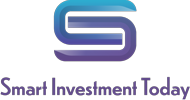The retail and consumer goods sectors depend on precise product tracking throughout the supply chain for various purposes, such as inventory tracking and recall management.
Businesses can use the GS1 QR code for tracking items by allocating a distinct, standardized QR code during production.
The QR code includes important data like the product’s unique ID, batch ID, date of manufacture, and expiration date. Scanning the item throughout the supply chain monitors its location and movement.
GS1 and QR codes
Global Standards 1 (GS1) is a global, non-profit organization that develops and maintains the standards for business communications. Think of it as a universal language for business.
GS1 QR expands the qualities of usual barcodes by holding detailed product data for tracking, product validation, and consumer awareness across the supply chain.
The retail and logistics industries are preparing for Sunrise 2027, a global initiative by GS1 to transition to data-rich, scannable QR codes, marking a shift toward smarter product tracking and traceability.
This transition allows more data encoded in a single code, giving businesses greater visibility into product details, movement, and origin.
All manufacturers, retailers, and distributors are expected to adopt these QR codes to facilitate smoother, faster, and more transparent supply chains by 2027. On this point, a GS1 QR code generator makes the transition easy to manage.
When customers scan the code
When consumers scan a GS1 code with their smartphone, it directs them to a specific link. What they see on this link depends entirely on what the brand or manufacturer decides to display.
There’s no set GS1 format for consumer-facing content. Brands often use this opportunity to share product details like nutritional facts, usage instructions, or even sustainability information.
This link may also provide access to promotional content or support resources, offering a customized experience that aligns with the brand’s goals.
When supply chain personnel scan the code
Scanning the same GS1 code with GS1-compatible equipment is a different experience for supply chain personnel.
The code reveals embedded data essential for efficient product tracking, such as the GTIN (product identifier), batch number, production date, and expiration date.
This information feeds directly into their inventory or ERP systems, allowing for accurate tracking at every stage—from production to retail shelves.
In simple terms, GS1 codes provide a universal language for businesses to communicate product information and track inventory.
They help businesses efficiently serve consumers by providing accurate product details while streamlining supply chain operations through precise inventory management.
Supply chain management systems
Every company needs a product tracking system before tracking products. This system is essential for recording data and keeping everything organized.
The tracking system is often connected to other systems, such as inventory management or ERP (Enterprise Resource Planning), so you can manage everything from one place.
A GS1 QR code for tracking keeps management systems in sync.
Scanning a product registers it to the tracking system logs and notes the product’s location. This process gives a complete record of the product’s journey through the supply chain.
The system collects all the data from each scan—whether at the factory, warehouse, retail store or when the customer buys the product.
GS1 QR code for tracking product process
Here’s how using GS1 codes to track products is accounted for at every supply chain step:
Generating and assigning a unique GS1 code
Companies use a GS1 QR code generator to create and assign a unique QR code to each ready-for-sale product. Each code contains vital information, such as:
GTIN: A unique number that identifies the product.
Batch Number: Helps track which batch of products the item came from. It is important for quality control and recalls, if necessary.
Production Date: Shows when the product was made.
Expiration Date: Tells when the product will no longer be suitable for use or sale.
Scanning and logging product movement
The GS1 code gets scanned from the factory to the consumer at different supply chain points. Each scan records the product’s location and logs its movement in the tracking system.
Like so:
At the factory/producer/source
When the product is made and packed, the GS1 QR code is scanned to log its entry into the system. It is for quality control and confirms that the product is now part of the supply chain.
Product storage or distributor
Warehouse workers scan the product again upon arrival. This log tells the system that the product is now in storage and ready for distribution.
Retail store
Store personnel scan the product to confirm it is available for sale.
Sale
Finally, the GS1 QR code for tracking is scanned at the checkout when a consumer buys the product. This marks the end of its journey in the supply chain.
When shipping (optional)
Scanning the code when the product is shipped for long-distance shipments, such as ocean freight, is particularly helpful. It helps companies know the product is now in transit and allows them to track its progress.
For shorter-distance shipments, scanning may not be necessary. However, some companies may still choose to do so for better tracking.
For businesses seeking real-time tracking, shipment tracking software, in conjunction with GPS, RFID, and IoT devices, monitors the movement of goods in transit.
These solutions can provide up-to-the-minute data on product location. However, they often require significant upfront investment and ongoing operational costs.
Upgrade to a GS1 QR code for tracking products
Implementing a GS1 code for tracking is an upgrade to the current retail and consumer goods methods.
By giving every product a distinct QR code, companies can easily track their products from production to customer, improving accuracy, efficiency, and visibility in the supply chain.
Companies can track information immediately, leading to better data flow, fewer mistakes, and efficient sales. This solution simplifies the tracking process and provides a more affordable method for handling inventory, shipments, and product movements.
As the Sunrise 2027 deadline approaches, it’s an excellent time for businesses to upgrade their tracking systems.
Adopting GS1 digital link QR codes now will help you stay ahead of the transition and ensure your business is fully prepared for the future of supply chain management.
Read more:
The Whys and Hows of GS1 QR Code for Tracking Products















